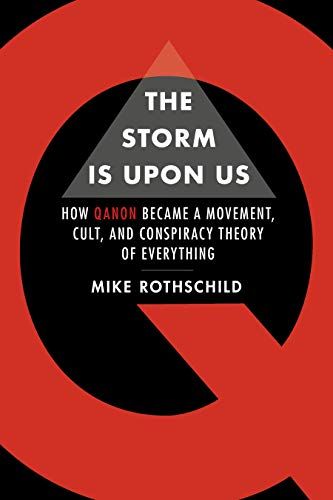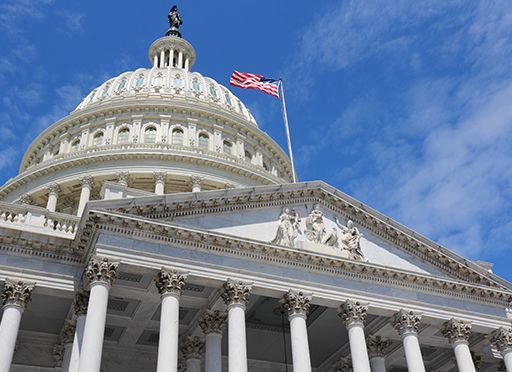Investigative journalist Mike Rothschild provides an objective, reasoned portrait of the history, beliefs and followers of the ever-changing conspiracy cult, QAnon.

What Is QAnon?
Whether you’ve heard about QAnon in the news, or have friends or family members who have gone down the QAnon rabbit hole, the multifaceted viral conspiracy theory seems ubiquitous. Investigative journalist Mike Rothschild, who writes for The New York Times and The Washington Post, serves up a complete guide to QAnon that will satisfy readers’ curiosity about the phenomenon and that offers helpful advice for dealing with QAnon followers. Rothschild provides an astute, thoughtful analysis of the group – without sneering at it.
“Q”
QAnon got its start on 4chan, an anarchic internet forum – a hotbed of strange, offensive memes and amateur hacktivism. In October 2017, an anonymous poster, who later used the name “Q Clearance Patriot,” wrote in the politics 4chan subforum that authorities planned to arrest former Democratic presidential candidate Hillary Clinton at a specific time and date.
As long as something major and unexpected takes place, there will be people who witness it and struggle to explain it.Mike Rothschild
Q’s post appeared after a strange Donald Trump press conference on October 5, 2017. Surrounded by members of the military, Trump alluded to “the calm before the storm” and said only that the media would soon “find out” what he meant. Trump fans perceived that he was about to bring an elite cabal of villains to justice.
Coded Messages
Q built a narrative about representing a small, secret intelligence team comprised of civilians and the military, all within the US government. Q claimed most Americans were unaware of an important battle taking place between good and evil.
Only Americans can create conspiracy theories that will sucker in Americans.Mike Rothschild
Q named the deep state – led by Clinton and bankrolled by Jewish financiers George Soros and the Rothschilds – as the forces of evil. Q portrayed Trump as a savior who would use martial law to protect the nation from progress-crazed liberals. Q did not expressly urge violence, but the paranoia, antisemitism, religious reawakening, investment scams and September 11, 2001, conspiracy theories that Q espoused encouraged it.
Pizzagate
QAnon believers assert that “future proves past,” or that future events will confirm the correctness of Q’s predictions. But believers disregard or rationalize Q’s numerous incorrect predictions.
Disconfirmation only makes believers believe more and harder.Mike Rothschild
Q drew inspiration from the 2016 Pizzagate incident, when conspiracy theorists and internet trolls invented a story about a child sex-trafficking ring run out of the basement of a pizza shop in Washington, DC. An armed believer traveled there, demanding justice, but he found that the pizzeria had no basement.
Momentum
QAnon gained momentum as people altered and amplified its beliefs across the internet to other social platforms like Reddit, which has more users and greater accessibility than 4chan. South African web designer Paul Furber brought Q’s ideas to Infowars, Alex Jones’s conspiracy theory-focused media property.
Believers joined this hyperselect and elevated group, thinking they were seeing the first rays of a new rising sun.Mike Rothschild
The self-published book QAnon: An Invitation to the Great Awakening rocketed to the top of The New York Times’ bestseller list.
Hope and Purpose
QAnon’s success stems from the human brain’s hardwiring, which seeks patterns; conspiracy theories involve pattern-finding. Q offered his messages in a nonsense code that followers regarded as a series of compelling puzzles.
For many Q believers, that nebulous feeling that ‘They’re all out to get me’ becomes ‘They’re all out to get me, and I’m going to get them first’.Mike Rothschild
Q followers believe themselves to be heroes. People overwhelmed by a fast-changing, unfamiliar or dangerous world often seek all-encompassing answers. Many would rather believe that outside forces, not themselves, are responsible for their failures and disappointments.
Radicalization
Matthew Wright, a QAnon believer from Nevada, thought the government was withholding a report about the Obama administration’s purported attempts to sabotage Trump’s campaign. Wright, demanding its release, armed himself, blockaded the Hoover Dam and led police on a chase in his armored truck.
It provides its believers something nobody usually expects out of cultish conspiracy movements – hope.Mike Rothschild
As QAnon’s rhetoric received media coverage and its user base grew, Trump flirted with the group. Several Republican candidates in the 2018 midterm election cycle embraced aspects of the group’s beliefs.
A Widening Audience
When the COVID-19 pandemic emerged, QAnon shifted its focus from the anti-Trump deep state to vaccine-related paranoia and child prostitution rings. The movement’s overlap with concern for child welfare won favor from young women and mothers on Instagram, where it became known as “Pastel QAnon.” Fear, isolation and 24/7 internet access during the pandemic accelerated QAnon’s spread.
It’s not illegal to pretend to be a prophet or digital warrior online, as long as you aren’t promising financial returns or specifically exhorting people to commit crimes.Mike Rothschild
Q went silent, leaving followers to craft their own narratives. Some people believe that Q is Paul Furber, despite his denials. Others say it’s Jim Watkins, the right-leaning owner of 8chan. Yet QAnon didn’t collapse after Q stopped posting; most followers regard themselves as “digital soldiers.”
The QAnon phenomenon culminated in the January 6, 2021, attack on the US Capitol, in which multiple lives were lost and many people were injured. QAnon believers, refusing to accept electoral defeat and goaded by Trump, mistakenly believed they could stop President Joseph Biden from taking office if Trump’s vice president, Michael Pence, rejected the Electoral College voting slate.
Believers
Family members and friends of QAnon adherents should understand what draws QAnon followers to the group. Believers think they’re saving the world or doing God’s work. QAnon also cuts followers off from other people and media sources. Those trying to get a loved one out of QAnon should avoid outright debunking, find support groups and avoid judgmental language, such as “brainwashing.”
Slippery Truth
Mike Rothschild trods a difficult and tricky path: discerning the truth about a movement devoted to shifting its beliefs daily to prevent anyone from saying anything definitive about it. Rothschild succeeds mightily where many others have failed, creating a readable, credible, objective portrait of QAnon’s sources, growth, credos, techniques, adherents and political policies. Always fair, Rothschild shows compassion for some QAnon followers and recognizes the group’s appeal to certain demographics.
Other books about QAnon include The QAnon Deception by James A. Beverley, Pastels and Pedophiles by Mia Bloom and Sophia Moskalenko, and QAnon by Michael D. Quinn.










